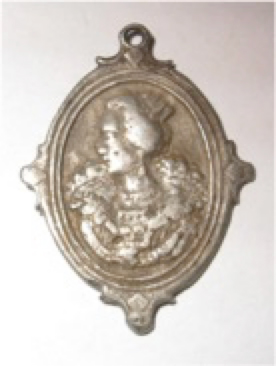Archaelogical Finds - Civil War Pendant
The period of History commonly known as the English civil war would have been a strange time to have been living in Lincolnshire; it started in 1642 when Charles I raised his Royal Standard in Nottingham and ended in 1649 when Charles was tried and found guilty of having “traitorously and maliciously levied war against the present Parliament and the people therein represented.”
Paintings such as W F Yeames’ “And when did you last see your father?” depict the fear that royalist families felt if their house was captured by Parliamentarians. Declaring support for either side to the wrong person could get an individual and their family into a great deal of trouble. It was therefore crucial to know who your friends were and who you could trust ad so, in order to demonstrate loyalty to either the King or parliament, people wore pendants, tokens and rings which they could show if they were captured or even just stopped on the road.
This find is one such civil war pendant bearing an image of King Charles I on one side and Queen Henrietta on the other. It is possible that it would have been sewn into the lining of jacket. These pendants were also worn after the death of King Charles as a means of mourning.
This pendant is made of silver and as such constitutes treasure trove as it is more than 300 years old, has more than 10% precious metal content and is not a coin. At time of writing it is with the British Museum for valuation as The Collection in Lincoln are interested in owning and displaying it.
It was found on an old footpath and was likely lost when the original owner was walking along. Or, it may have been deliberately thrown away, of course, if the owner changed sides or realised the King was going to be on the losing side.
What is clear is that the civil war affected everyday life for the people of Minting and Gautby.
By David Allsop
